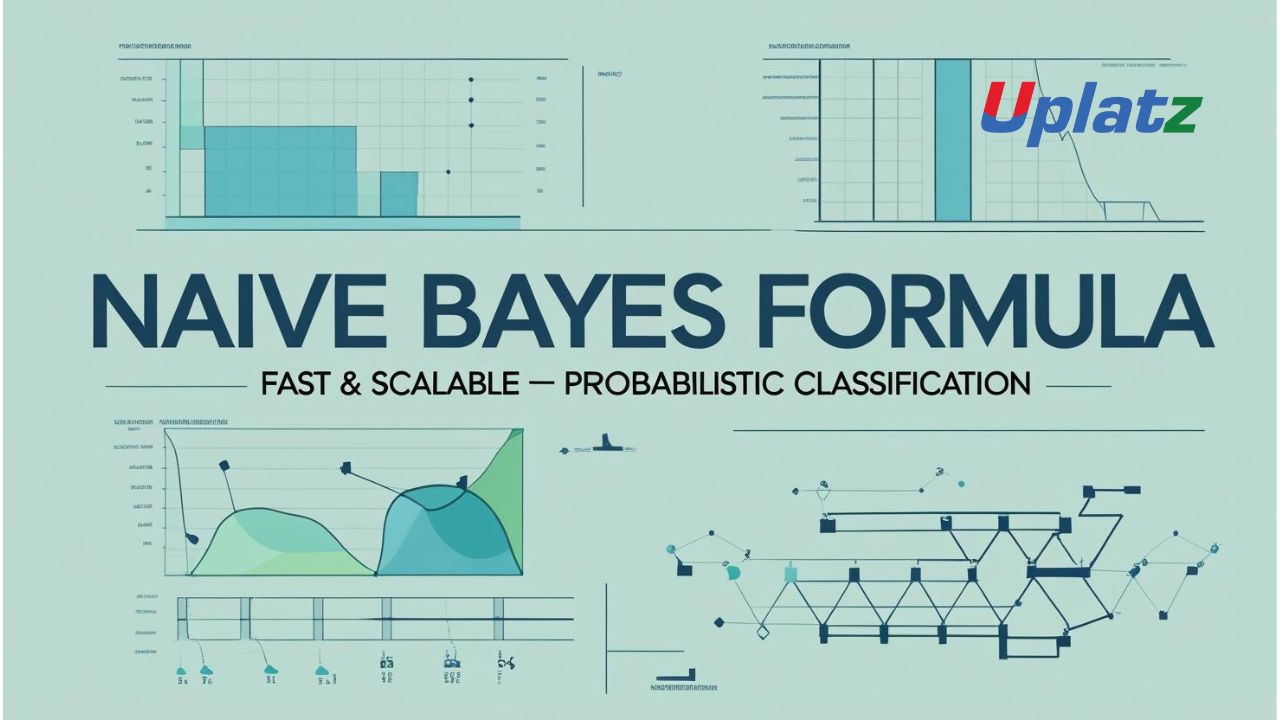 🔹 Short Description:
🔹 Short Description:
Naive Bayes is a supervised learning algorithm based on Bayes Theorem, assuming feature independence. It’s widely used for classification tasks like spam detection and sentiment analysis.
🔹 Description (Plain Text):
The Naive Bayes Formula is an efficient and scalable classification technique grounded in Bayes Theorem. What makes it “naive” is the strong assumption of independence among features—it assumes that the presence of one feature is unrelated to the presence of others, given the class label. While this assumption rarely holds in practice, the algorithm still performs remarkably well in many real-world scenarios, especially when working with high-dimensional data.
📐 Core Formula
P(C|X) = [P(X₁|C) × P(X₂|C) × … × P(Xₙ|C)] × P(C) / P(X)
Where:
- C is the class label
- X = (X₁, X₂, …, Xₙ) is the feature vector
- P(C|X) is the posterior probability of class C given input features
- P(X|C) is the likelihood
- P(C) is the prior probability of class C
- P(X) is the probability of the feature vector (can be ignored for comparison)
Since P(X) is constant for all classes, in practice we compute:
P(C|X) ∝ P(C) × ∏ P(Xᵢ|C)
🔍 Intuition Behind Naive Bayes
Imagine you’re classifying emails as Spam or Not Spam. Given a new email, you want to estimate:
- How likely it is to be spam given the words in the email.
Naive Bayes computes the probability of spam given the presence of each word, combining their individual likelihoods. It then selects the class with the highest posterior probability.
Despite its simplicity, this model can handle thousands of features (words) and still make predictions fast and accurately.
🧠 Types of Naive Bayes Models
- Multinomial Naive Bayes – Works with discrete features (e.g., word counts in NLP).
- Bernoulli Naive Bayes – Deals with binary/boolean features (e.g., presence or absence of words).
- Gaussian Naive Bayes – Used for continuous features, assuming they follow a normal distribution.
Each version applies the same formula but tweaks how P(Xᵢ|C) is computed depending on the feature type.
🧪 Real-World Applications
- Spam Detection: Classify emails based on word frequencies.
- Sentiment Analysis: Determine if a review is positive or negative.
- Medical Diagnosis: Predict diseases based on symptoms.
- Document Classification: Categorize texts (e.g., legal, educational).
- Language Detection: Identify the language based on word distributions.
- Recommendation Systems: Predict user preferences from past behavior.
🚀 Key Advantages
- Scalable: Can handle large datasets and high-dimensional feature spaces.
- Fast: Training and prediction are extremely fast and memory efficient.
- Performs well with limited data: Especially in text classification tasks.
- Low variance: Less prone to overfitting compared to more complex models.
- Easy to interpret: Offers probabilistic reasoning and explainability.
⚠️ Limitations
- Feature Independence Assumption: Not always realistic in real-world data, especially when features are correlated.
- Zero Probability Problem: If a feature-category combination wasn’t seen during training, it could assign zero probability. This is usually addressed by Laplace Smoothing.
- Less effective for continuous or image-based data: Compared to modern deep learning approaches.
- Assumes normal distribution in Gaussian version: May underperform if the data is skewed or multi-modal.
Despite these caveats, Naive Bayes remains a go-to algorithm for many production-grade classification systems—particularly in text-heavy applications.
📊 Summary
- Formula: P(C|X) ∝ P(C) × ∏ P(Xᵢ|C)
- Assumption: Features are conditionally independent given the class
- Used For: Fast classification in NLP, spam detection, diagnosis
- Strength: Simple, interpretable, and efficient
- Weakness: Relies on independence assumption, sensitive to zero probabilities
Naive Bayes proves that sometimes simple models can outperform sophisticated ones—especially when speed, scalability, and interpretability matter.
🔹 Meta Title:
Naive Bayes Formula – Simple and Powerful Classifier for Fast Predictions
🔹 Meta Description:
Master the Naive Bayes formula used in fast classification tasks. Understand its foundation, types, and how it applies Bayes Theorem with an independence assumption.
